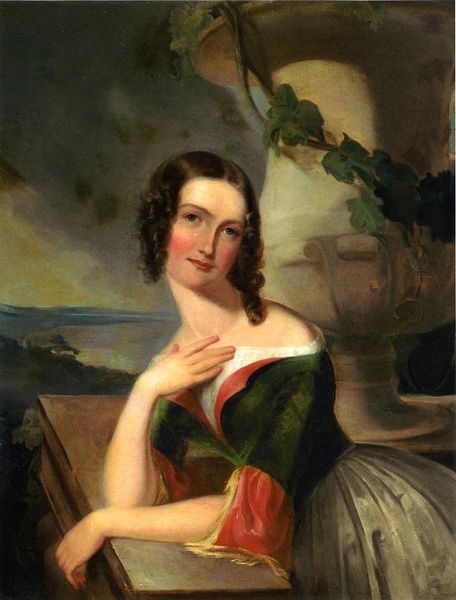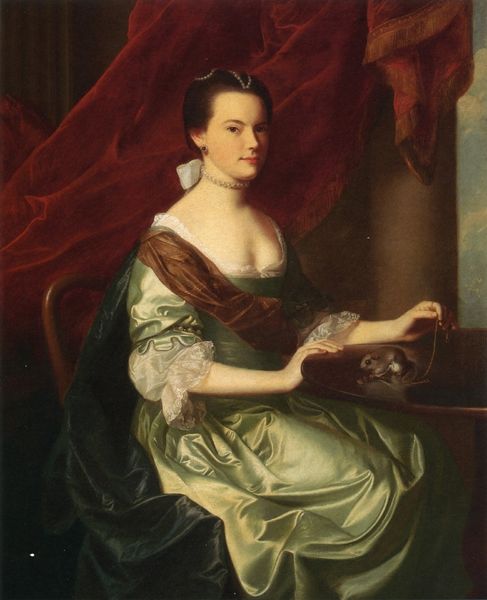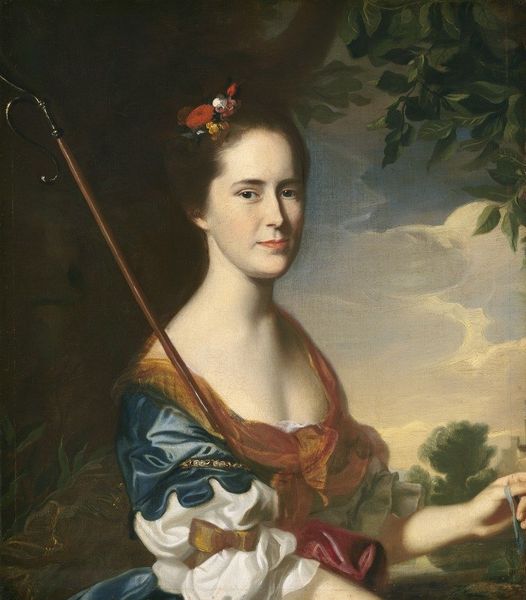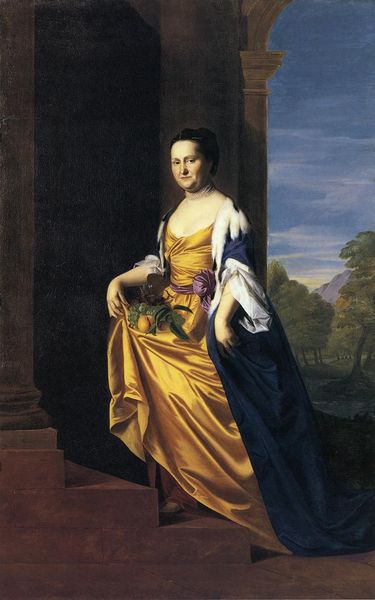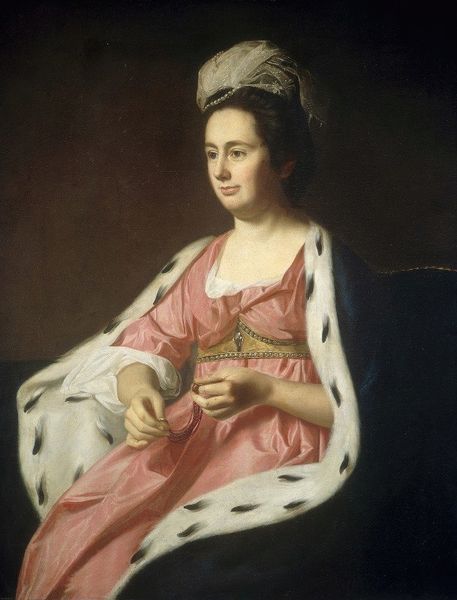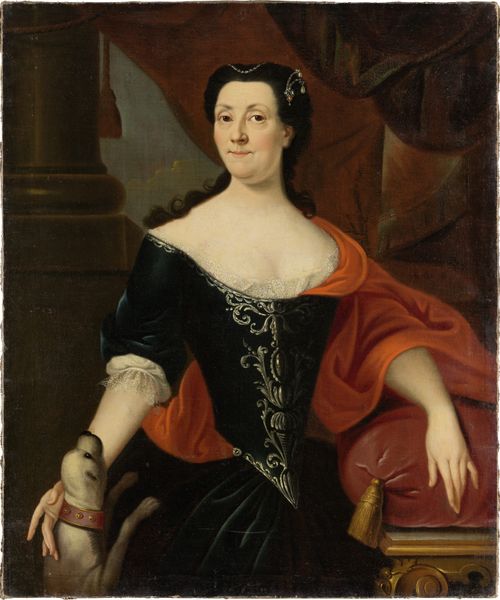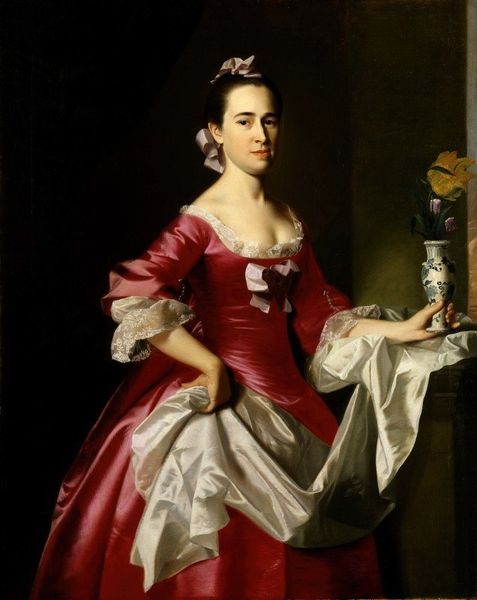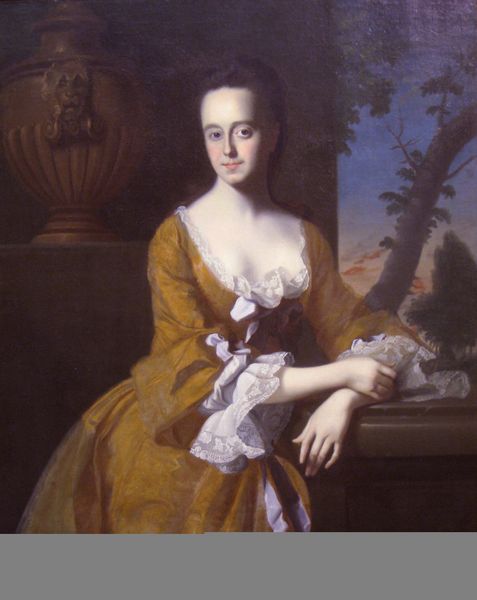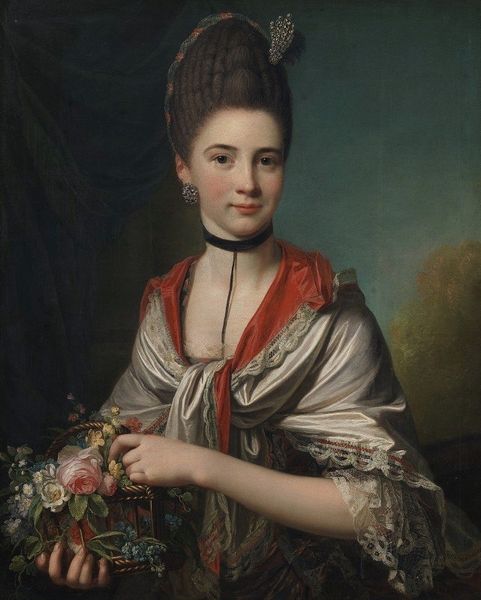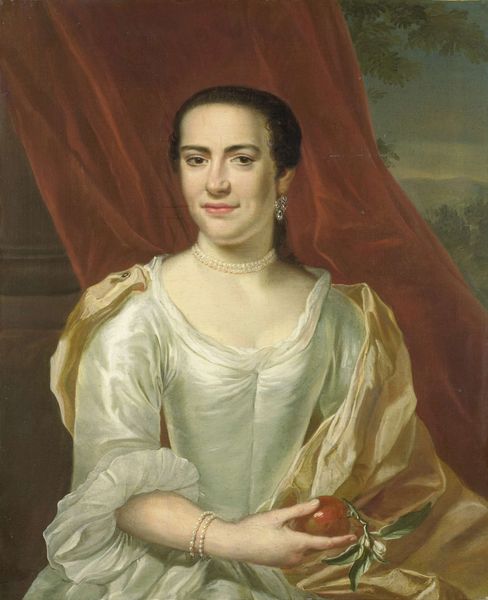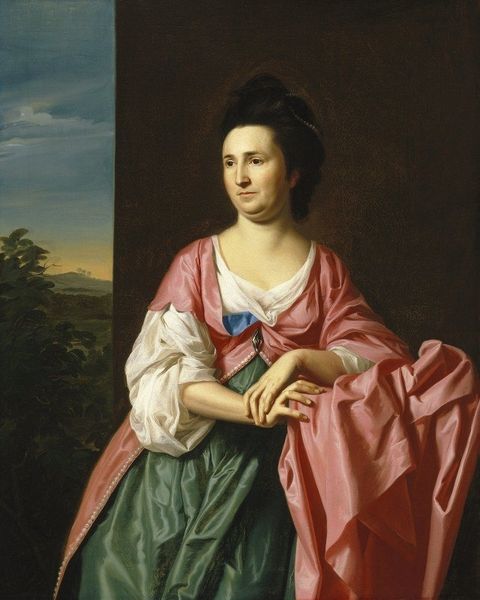
Copyright: Public domain
Curator: Seeing Julia Stockton Rush poised with that instrument, I'm immediately struck by its intimacy, its almost miniature feel. The colors are muted yet rich, focusing attention on her serene expression. Editor: We’re looking at a portrait of Julia Stockton (Mrs. Benjamin) Rush, completed in 1776 by Charles Willson Peale. It exemplifies portraiture of that era, when likenesses became markers of social and political identity in colonial America. Curator: Absolutely. Peale, as you note, situates Mrs. Rush in a highly constructed pose. The lute, in particular, seems laden with symbolism. Instruments of this kind signify refinement, leisure, and cultural achievement - values prized in elite circles of the time. Yet she doesn't seem fully engaged in playing. Editor: You've keyed in on something important there. Her touch is light, almost hesitant, more suggestive of display than musical performance. It could underscore her social standing—art collecting and displays of cultural knowledge being de rigueur in the upper echelons of society. Note the Rococo style is emphasized by the curvilinear composition and rich satins of her dress. Curator: But does that explanation completely resolve the subtle tension in the image? I find myself wondering if the lute signifies more than mere status. Historically, the lute possesses an almost melancholy aura, associated with longing, even lament. Considering its proximity to the subject and this nation’s precarity, is Peale pointing to something deeper, perhaps a hidden emotional register during the nation’s precarious founding? Editor: That’s astute! Certainly, portraits don't just reflect outward appearances; they actively construct identity and often allude to a wider social sphere. If the sitter chooses props – like an instrument – what resonances do those things possess in popular consciousness, in collective memory? What does a certain style of dress or musical preference convey at that particular moment in history? Curator: And, of course, Mrs. Rush herself might have wished to broadcast this particular identity, carefully crafting an image to endure in public memory. Editor: An image both performative and potentially vulnerable. The muted palette enhances this feeling; as if to imply the gravity of her status in revolutionary society. It offers food for thought.
Comments
No comments
Be the first to comment and join the conversation on the ultimate creative platform.

